Table of Contents
-
FREE
REGISTRATION
HERE!
-
Become a sponsor
HERE!
-
New to supercomputing? Click
here.
-
KEYNOTE:
Manish
Parashar,
National Science Foundation
-
PLENARY:
Dan Stanzione,
Texas Advanced Computing Center,
University of Texas at Austin
-
PLENARY:
Henry Neeman,
University of Oklahoma
-
Kate Adams,
Great Plains Network
-
Daniel Andresen,
Kansas State University
-
Shady Boukhary,
Midwestern State University
-
Eduardo
Colmenares,
Midwestern State University
-
Qian Gao,
University of Oklahoma
-
Jivtesh Garg,
University of Oklahoma
-
Kyle Hutson,
Kansas State University
-
Aaron Johnson,
University of Oklahoma
-
Prabir Khatua,
University of Oklahoma
-
BJ Lougee,
Federal Reserve Bank of Kansas City
-
Vy Nguyen,
University of Oklahoma
-
Xiaoliang Pan,
University of Oklahoma
-
Felipe Perez,
University of Oklahom
-
Alan Ray,
University of Oklahoma
-
Nickalas Reynolds,
University of Oklahoma
-
Derek Stratman,
University of Oklahoma
-
Keith Walters,
University of Oklahoma
-
Yu Yan,
University of Oklahoma
PLENARY
SPEAKERS
Office Director
Office
of Advanced Cyberinfrastructure
National
Science Foundation
Topic:
"Transforming Science in the 21st Century:
NSF's Vision for
a National Cyberinfrastructure Ecosystem"
Slides:
available after the Symposium
Talk Abstract
Twenty-first century science and engineering
(S&E)
research is being transformed by
the increasing availability and scales of
computation and data,
and
the national cyberinfrastructure (CI) ecosystem
has become
a key catalyst
for discovery and innovation.
The
National
Science Foundation's
Office
of Advanced Cyberinfrastructure
(OAC)
supports
the broad availability and innovative use of
a CI ecosystem that is
critical to the advancement of
all areas of
science and engineering research and education,
and its investments
have consistently enabled
new innovations and discoveries.
Recent years have witnessed dramatic changes in
the number and nature of applications
using NSF-funded resources,
as well as their resource demand.
NSF/OAC
has responded to
this dramatically changing
application and technology landscape,
and has articulated a vision for
an
agile,
integrated,
robust,
trustworthy
and
sustainable
CI ecosystem
that can drive new thinking
and
enable transformative discoveries.
In this talk,
I will present an overview of
NSF's vision for
a national cyberinfrastructure ecosystem,
as well as its
recent programs and investments
in support of this vision.
Biography
Manish Parashar
is Office Director of the
Office
of Advanced Cyberinfrastructure
(OAC)
at the
National
Science Foundation
(NSF).
He joins NSF from
Rutgers,
The State University of New Jersey,
where he is currently
a Distinguished Professor
and
the
founding Director of the
Rutgers
Discovery Informatics Institute.
His research interests are in
the broad areas of
Parallel and Distributed Computing
and
Computational and Data-Enabled
Science and Engineering.
Manish
is
a Fellow of
the
American
Association for
the Advancement of Science
(AAAS),
a Fellow of the
IEEE/IEEE
Computer Society,
and
an
Association
for Computing Machinery
(ACM)
Distinguished Scientist.
Executive Director
Texas
Advanced Computing Center
The University
of Texas at Austin
Topic:
"The Next Generation NSF Computing Resource"
Slides:
available after the Symposium
Talk Abstract
Coming soon
Biography
Dan Stanzione is the Executive Director of the
Texas
Advanced Computing Center
(TACC)
at
The
University of Texas at Austin
and the Principal Investigator for
Wrangler.
He is also the PI for TACC's 10 PetaFlop
Stampede
supercomputer,
and has previously been involved in
the deployment and operation of the
Ranger
and
Lonestar
supercomputers at TACC.
He served as the Co-Director of
The
iPlant Collaborative,
an ambitious endeavor to build
cyberinfrastructure to address
the grand challenges of plant science.
Prior to joining TACC,
Dr. Stanzione was the founding director of the
Ira A. Fulton
High Performance Computing Institute
(HPCI)
at
Arizona
State University (ASU).
Before ASU,
he served as an AAAS Science Policy Fellow
in the
National
Science Foundation
and as a research professor at
Clemson
University,
his alma mater.
Henry
Neeman
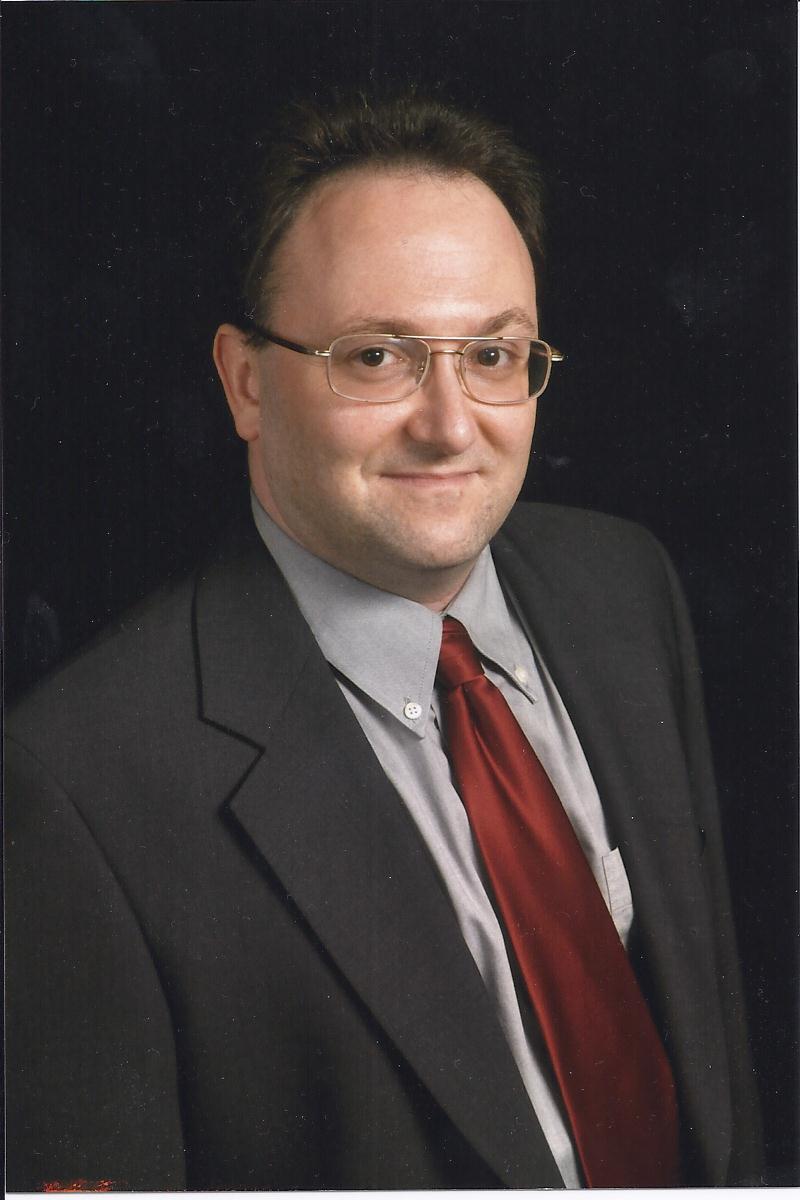
Assistant Vice President
–
Research Strategy Advisor
Information
Technology
Director
OU
Supercomputing Center for Education
& Research (OSCER)
Information
Technology
Associate Professor
College
of Engineering
Adjunct Associate Professor
School
of Computer Science
University
of Oklahoma
Joint Co-manager
(with
Dana
Brunson)
XSEDE
Campus Engagement
program
Topic:
"OSCER State of the Center Address"
Slides:
PowerPoint
PDF
Talk Abstract
The
OU
Supercomputing Center for
Education & Research
(OSCER)
celebrated its 17th anniversary
on August 31 2019.
In this report,
we examine
what OSCER is,
what OSCER does,
what OSCER has accomplished
in its 16 years,
and where OSCER is going.
Biography
Dr.
Henry Neeman
is the
Director of the
OU
Supercomputing Center for Education &
Research,
Assistant Vice President
Information Techology
–
Research Strategy Advisor,
Associate Professor in the
College
of Engineering
and
Adjunct Associate Professor in the
School
of Computer Science
at the
University of
Oklahoma.
He and
Dana
Brunson
have been appointed
joint co-leads of the
XSEDE
Campus Engagement
program,
which includes the
Campus
Champions.
He received his BS in computer science
and his BA in statistics
with a minor in mathematics
from the
State
University of New York at Buffalo
in 1987,
his MS in CS from the
University of
Illinois at Urbana-Champaign
in 1990
and his PhD in CS from UIUC in 1996.
Prior to coming to OU,
Dr. Neeman was a postdoctoral research
associate at the
National
Center for Supercomputing Applications
at UIUC,
and before that served as
a graduate research assistant
both at NCSA
and at the
Center for
Supercomputing Research &
Development.
In addition to his own teaching and research,
Dr. Neeman has collaborated with
dozens of research groups,
applying High Performance Computing techniques
in fields such as
numerical weather prediction,
bioinformatics and genomics,
data mining,
high energy physics,
astronomy,
nanotechnology,
petroleum reservoir management,
river basin modeling
and engineering optimization.
He serves as an ad hoc advisor
to student researchers
in many of these fields.
Dr. Neeman's research interests include
high performance computing,
scientific computing,
parallel and distributed computing
and
computer science education.
OTHER
PLENARY SPEAKERS
TO BE ANNOUNCED
Kate Adams
Cyberinfrastructure Technologist
Great
Plains Network
Topic:
"Lessons Learned (So Far) from Developing
a Research Platform in the Great Plains"
Slides:
PDF
Talk Abstract
Research Platforms
are one of the latest iterations in
collaboration.
But what is a "Research Platform"?
How are they built?
The Great Plains Network Research Platform
is in-process.
In this talk,
Kate will briefly explain
the GPN RP history and lessons learned so far.
The second part is
a round table with the audience.
Bring your questions,
experiences,
comments,
and all things collaboration!
How are you collaborating and
enabling others to collaborate?
Biography
Kate Adams
does a bit of everything at GPN,
where she has worked since November 2009.
Daniel
Andresen
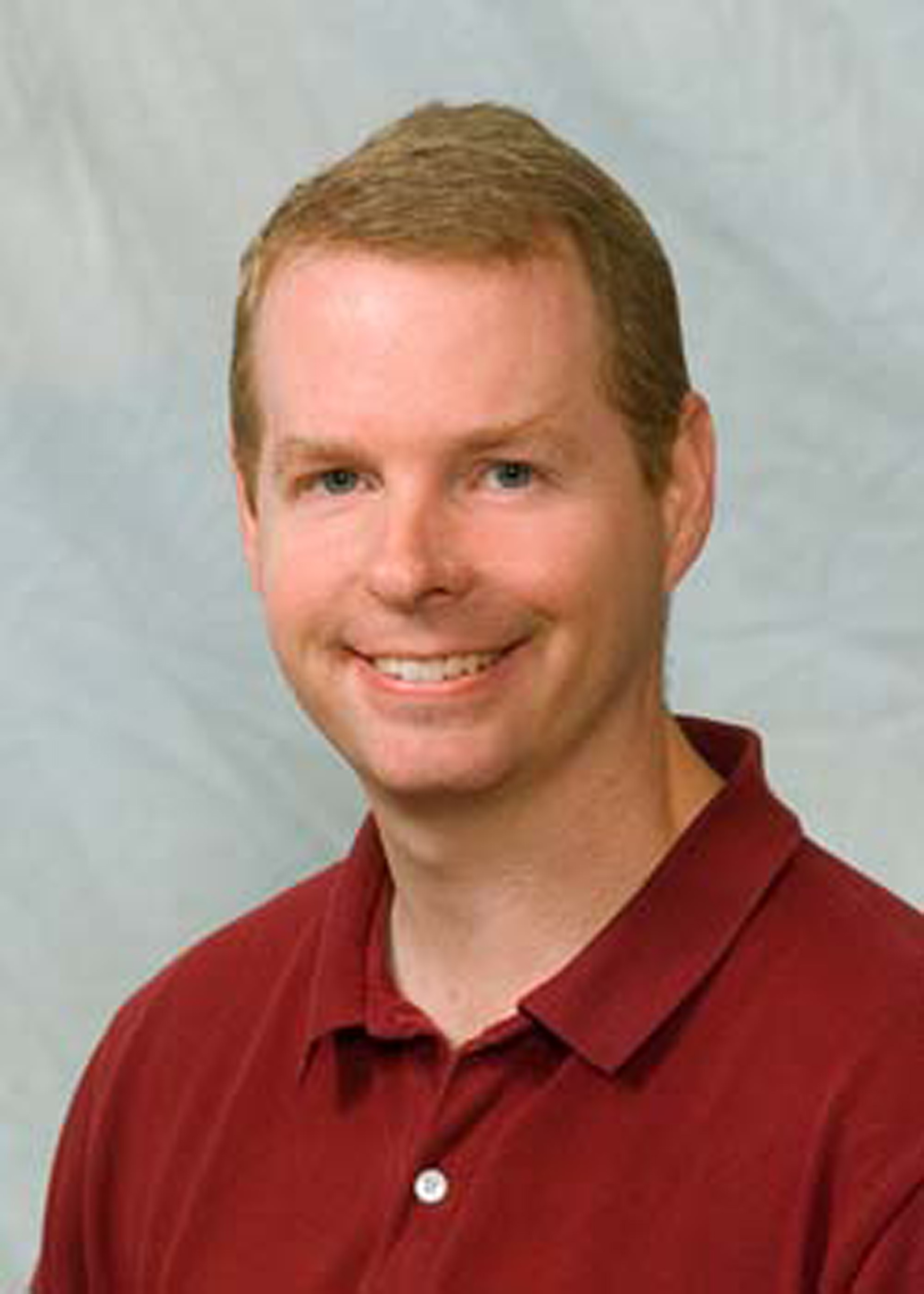
Professor
Department of
Computer Science
Kansas State
University
Director
Institute for Computational Research
Topic:
"Birds-of-a-Feather Session:
XSEDE Region 4 Campus Champions"
(with
BJ
Lougee)
BoF Slides:
available after the Symposium
Abstract
The
XSEDE
Campus
Champions
program supports campus representatives
as a local source of knowledge about
local, regional and national
High Performance Computing and
Cyberinfrastructure information,
including XSEDE resources.
We would like to invite everyone
—
any current Campus Champions,
possible Campus Champions,
and those who are just curious
—
to a
"Meeting of the Champions."
During our Birds-of-a-Feather session,
join your fellow
Region 4
Campus Champions
(from AR, KS, LA, MO, NE, OK and TX)
to discuss the program,
what you can expect to gain from participating,
what we hope to achieve
in the way of
both short term and long term goals,
future visions for the program,
etc.
Dr. Dan Andresen
(Kansas State
University)
and
BJ Lougee
(Federal
Reserve Bank of Kansas City)
will act as the emcees
for this meeting,
which is expected to draw attendance from
both current and prospective Campus Champions
from around the Region.
Response to these regional meetings
in other parts of the US
have been
very favorable,
so we're anxious to offer the opportunity
to all of you!
Biography
Daniel
Andresen, Ph.D.
is a professor of
Computing
& Information Sciences
at
Kansas
State University
and Director of the
Institute for Computational Research.
His research includes
embedded and distributed computing,
biomedical systems,
and high performance scientific computing.
Dr. Andresen coordinates the activities of
the K-State research computing cluster,
Beocat,
and advises the
local
chapter
of the
Association
for Computing Machinery
(ACM).
He is a
National
Science Foundation
CAREER
award winner,
and has been granted research funding from
the NSF,
the
Defense
Advanced Research Projects Agency
(DARPA),
and industry.
He is a member of
the
Association
for Computing Machinery,
the
IEEE
Computer Society,
the
Electronic
Frontier Foundation,
the
American
Society for Engineering Education,
and has been an
XSEDE
Campus
Champion
since 2011.
Shady
Boukhary
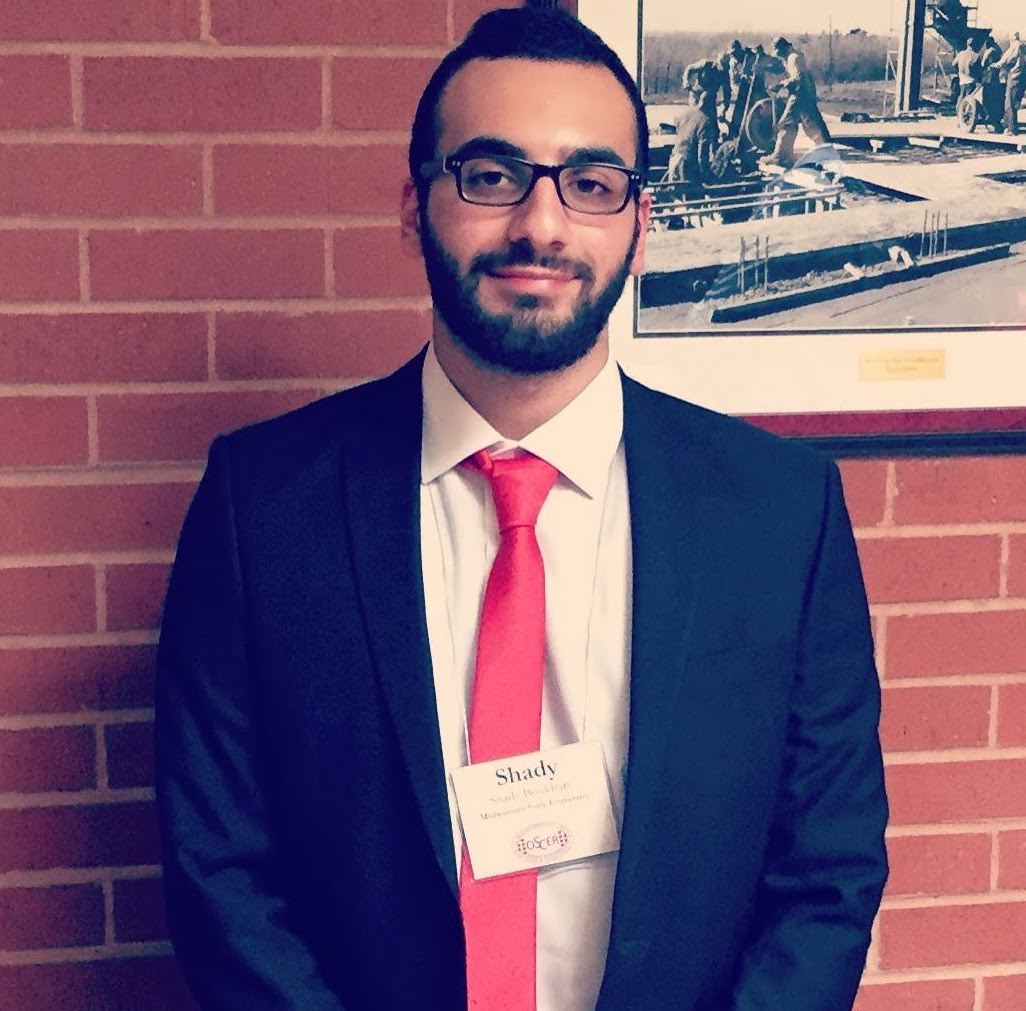
Undergraduate Student
Computer
Science Department
Midwestern
State University
Topic:
"Study, Analysis and Acceleration of an
N-Body Simulation under Many-Core Environments"
(with
Eduardo
Colmenares)
Slides:
available after the Symposium
Abstract
This research
studies, analyzes, and accelerates
a solution to
the widely known N-Body problem in physics
under CUDA.
A non-traditional approach to CUDA programming
is taken,
in order to study
the efficiency of using
Object Oriented programming
in GPU programming,
as opposed to the traditional approach.
We explore
the advantages and disadvantages
that such an approach entails,
and whether the advantages
outweigh the disadvantages.
Biography
Shady Boukhary
is a
Computer
Science
student at
Midwestern
State University.
He is very passionate about
technology and has always been fascinated by
its impact on daily lives.
His main interests are
High Performance Computing,
Deep Learning,
and
Software Engineering.
Shady Boukhary
has also shipped
multiple software solutions to
multiple software companies.
He worked at
ArrayFire
during the summer of 2019,
during which he shipped a low-latency
OpenGL
Streaming Library
and a Java wrapper for the
ArrayFire GPU library.
In addition,
he has one peer-reviewed publication
in the HPC field,
and has served as
a mentor during the
ORNL
GPU Hackathon
organized by NVIDIA in 2018.
Eduardo
Colmenares
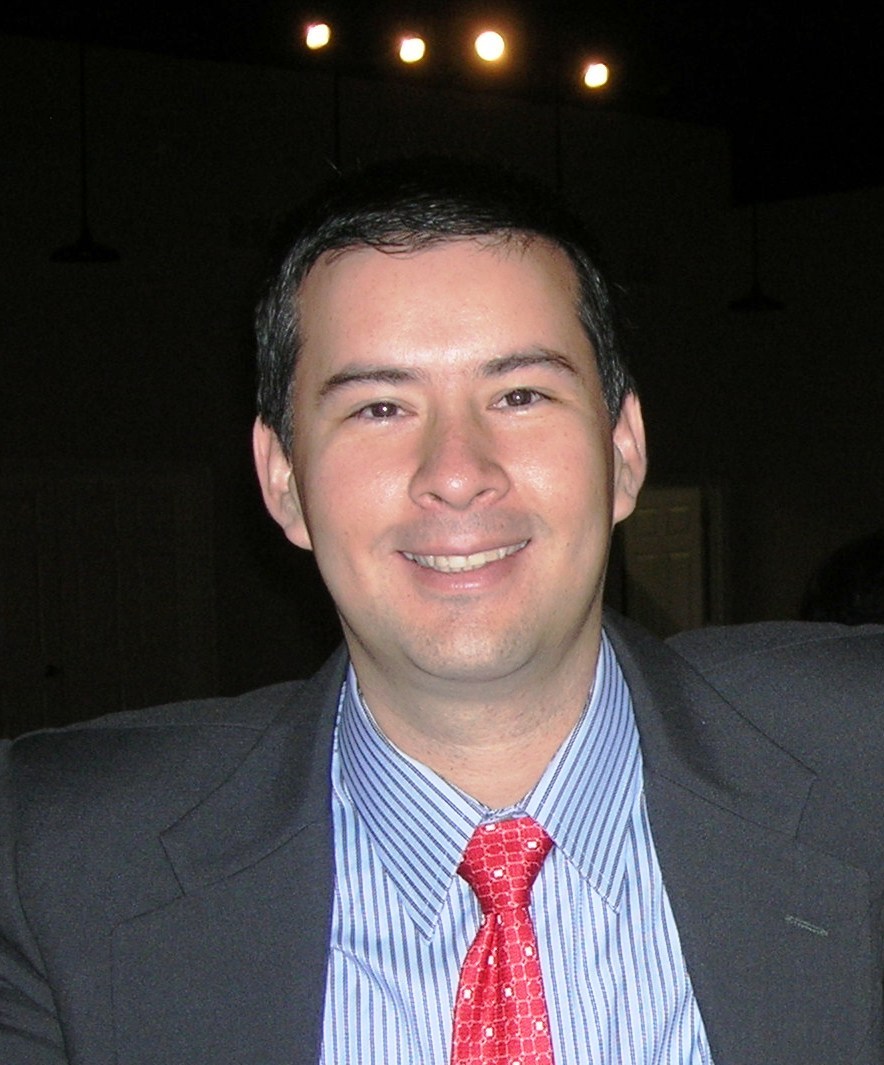
Assistant Professor
Computer
Science Department
Midwestern
State University
Topic:
"Study, Analysis and Acceleration of an N-Body
Simulation under Many-Core Environments"
(with
Shady
Boukhary)
Slides:
available after the Symposium
Abstract
This research
studies, analyzes, and accelerates
a solution to
the widely known N-Body problem in physics
under CUDA.
A non-traditional approach to CUDA programming
is taken,
in order to study
the efficiency of using
Object Oriented programming
in GPU programming,
as opposed to the traditional approach.
We explore
the advantages and disadvantages
that such an approach entails,
and whether the advantages
outweigh the disadvantages.
Biography
Dr. Eduardo Colmenares is
an Assistant Professor of
Computer
Science
at
Midwestern
State University.
He received his BS in
Electronics Engineering
from the
Industrial
University of Santander,
Colombia,
his Master of Science and PhD in
Computer
Science
from
Texas
Tech University,
both with Focus in
High Performance Computing and
Scientific Computing.
Dr. Colmenares serves as
a member of the steering committee for
the
Consortium
for Computing Sciences in Colleges
(CCSC),
and is also the author of
multiple peer reviewed publications
in HPC and Software Engineering.
His research interest include
HPC,
Deep Learning
and
undergraduate Software Engineering.
Qian Gao
Postdoctoral Researcher
Mewbourne
School of Petroleum & Geological
Engineering
University
of Oklahoma
Topic:
"Parallel Finite Element Simulations of
3D Hydraulic Fracture Propagation"
Slides:
available after the Symposium
Talk Abstract
Coming soon
Biography
Qian Gao
is a postdoctoral researcher in the
Reservoir
Geomechanics & Seismicity
Research Group
at the
University
of Oklahoma.
His research investigates
the fully coupled thermo-hydro-mechanical (THM)
behaviors of underground discontinuities,
such as
newly created hydraulic fracture,
pre-existing natural fracture,
and
joints.
Emphasis is focused on
the coupled THM processes
involved in hydraulic fracture propagation,
thermal circulation through
pre-existing fractures,
and
reactivation of joints
due to fluid injection.
Numerical modeling
utilizing the finite element method
is the main approach involved in his work.
He holds a Ph.D. degree in
Petroleum Engineering
from the
University of Oklahoma.
Jivtesh
Garg
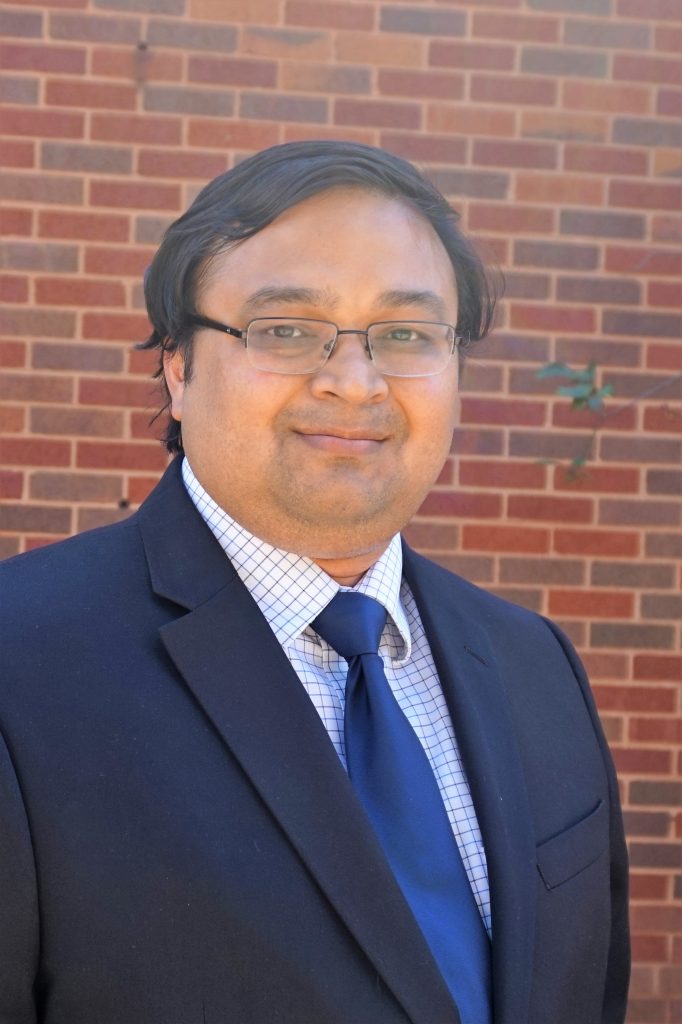
Assistant Professor
School
of Aerospace & Mechanical
Engineering
University
of Oklahoma
Topic:
"High Thermal Conductivity
Semiconductors and Polymers"
Slides:
available after the Symposium
Talk Abstract
This talk will address two materials systems:
compound semiconductors and
polymer-graphene nanocomposites.
In compound semiconductors such as
Gallium Nitride (GaN),
the large mismatch between
masses of Gallium and Nitrogen
leads to an energy gap in
the vibrational spectrum of the material.
This energy gap plays a key role in inhibiting
scattering of low energy vibrations by
higher energy vibrations,
and vice versa.
The former effect,
related to low energy vibrations,
has importance for
high thermal conductivity materials,
due to their predominant role in
conducting heat.
Suppression of scattering
enhances vibration lifetimes,
thus increasing thermal conductivity.
The latter effect,
related to higher energy vibrations,
has importance for hot carrier solar cells,
where suppressed scattering
can enable hot carriers,
enhancing efficiency.
Finally,
this talk will address
the role of superior functionalization schemes
in enabling
higher interface thermal conductance
between polymer and graphene.
Biography
Jivtesh Garg's
research is focused on
design of high thermal conductivity materials,
including
semiconductors and polymer composites,
through both
advanced computations and experiments.
He obtained his Ph.D from the
Massachusetts
Institute of Technology,
Cambridge,
where his work focused on
accurate prediction of thermal conductivity of
semiconductor materials
using first-principles based methods.
Dr. Garg is using
such a first-principles approach
to investigate the role of
the energy gap in vibration spectra of
certain compound semiconductors
in enhancing thermal conductivity.
The effect has been recently shown
to yield materials with
thermal conductivity even higher than diamond.
First-principles techniques are also being used
to understand vibration relaxation mechanisms
in quantum well hot carrier solar cells.
Finally,
simulations are also used,
to study the effect of,
different covalent bonding schemes on,
interface conductance between,
polymer and graphene.
These research areas
have applications for
improving thermal management
and for achieving
higher energy conversion efficiency
in technologies such as
thermoelectrics and solar cells.
Kyle
Hutson
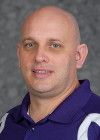
System Administrator
Department of
Computer Science
Kansas State
University
Topic:
"Birds-of-a-Feather Session:
HPC System Administrators"
Slides:
none
Abstract
We recently observed that
system administrators
are often leary of advice
(even from their direct supervisors)
unless it has been given from
somebody else who
(a) has signficant relevant experience,
(b) they know and trust,
and
(c) can point out the "gotchas."
This Birds-of-a-Feather session
is for system administrators
to talk among themselves about
current pain-points,
things we've done that have turned out well,
and
things we've done that have flopped.
Biography
Kyle Hutson has been involved with
Linux system administration since 1994.
He received his bachelor's degree from
Kansas State
University
in
computer
engineering
in 1995.
He has worked in
non-profit,
public sector,
and
private sector IT services,
including several years as
a small business IT consultant.
Kyle joined
Kansas State University's
HPC team in 2012.
Aaron
Johnson, PhD
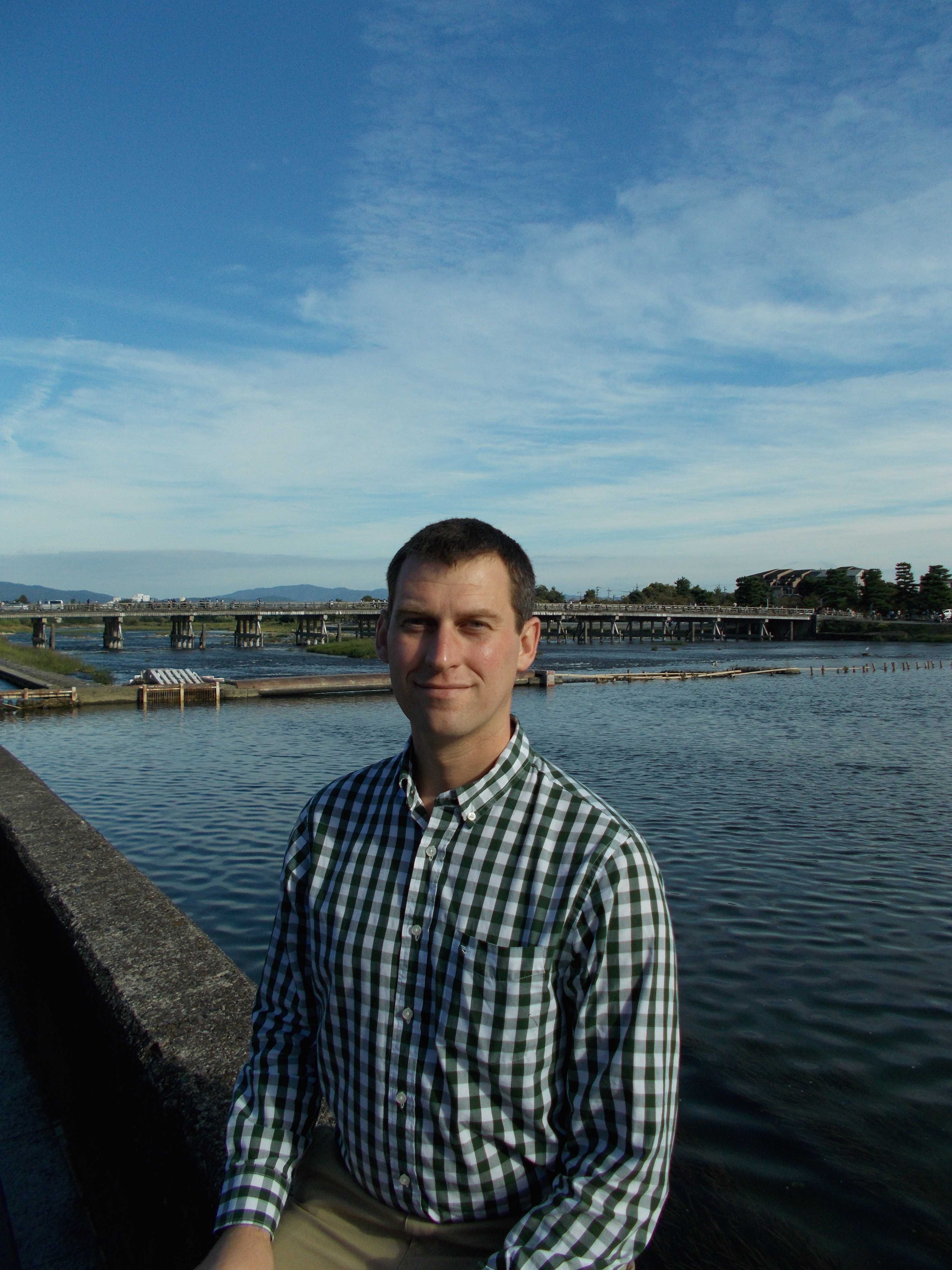
Research Scientist
Multiscale
data-Assimilation and Predictability
(MAP)
Laboratory
School
of Meteorology
University
of Oklahoma
Topic:
"Improving Forecasts of Nocturnal Thunderstorms
via High Resolution Simulation of
Atmospheric Bores"
Slides
Abstract
Numerical weather prediction (NWP) models
have relatively low skill in
predicting nocturnal thunderstorms in
the Great Plains,
in comparison to other weather systems.
Meanwhile,
most of the warm season precipitation in
the Great Plains
is associated with nocturnal thunderstorms.
Given the importance of
improving this aspect of NWP,
the
Multiscale
data-Assimilation and Predictability
(MAP)
Laboratory
at
the
University
of Oklahoma
has extensively studied this problem
from many angles,
relying heavily on
the Schooner and Petastore resources at
the
OU
Supercomputing Center for
Education & Research
(OSCER).
This talk will focus on
a series of
high resolution experimental simulations of
atmospheric bores,
which feature prominently in
the initiation and maintenance of
many nocturnal thunderstorm systems.
One goal of the
Plains
Elevated Convection At Night
(PECAN)
field campaign was to comprehensively observe
features such as bores
that are important for
the predictability of nocturnal thunderstorms.
The unprecedented data collected during PECAN
are therefore
used to validate
model simulations of
a bore occurring overnight in northern Kansas
in the late evening of 10 July 2015.
NWP simulations of the bore
are shown to be sensitive to
the physics parameterizations of the model,
particularly
the treatment of cloud microphysics
and
sub-grid scale turbulence.
Greatly enhancing
the horizontal and vertical resolutions of
the model
is shown to greatly improve
the fidelity of the simulated bores
to the observed bore.
However,
there is a point at which
better resolving the bore itself
provides limited further benefit
in terms of improving how
the bore impacts
the larger scale model environment
to be experienced by subsequent thunderstorms.
This result emphasizes
a trade-off between
using greater computational resources
and quantifiable improvements in
forecast performance.
Biography
Aaron Johnson
is a Research Scientist in the
Multiscale
data-Assimilation and Predictability
(MAP)
Laboratory,
led by
Prof
Xuguang
Wang,
at the
University
of Oklahoma
He completed his B.S. with a double major in
Meteorology
and
Computer
Science
at
Valparaiso
University,
before joining Dr. Wang's lab in 2009
as a Graduate Research Assistant,
where he completed his
M.S. (2011)
and
PhD (2014)
in
Meteorology.
His current research interests
are focused primarily on
various aspects of
the design and verification of
convection permitting
ensemble forecast systems.
Prabir Khatua
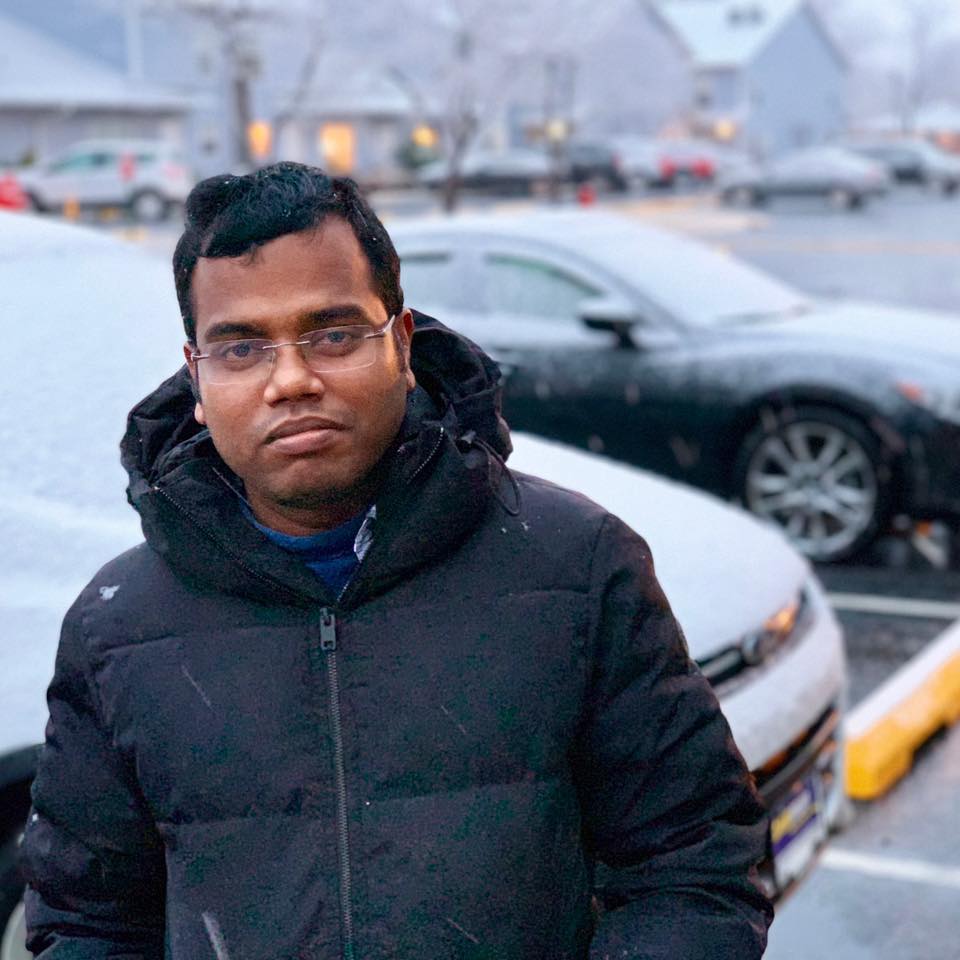
Postdoctoral Research Associate
Department
of Chemistry & Biochemistry
University
of Oklahoma
Topic:
"Computational Challenges in
Biomolecular Simulation"
Slides:
available after the Symposium
Talk Abstract:
Coming soon
Biography
Coming soon
BJ Lougee
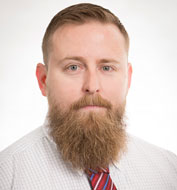
Cyberinfrastructure Engineer and
Cyberinfrastructure Practitioner
Center
for the Advancement of Data and Research
in Economics
(CADRE)
Federal
Reserve Bank of Kansas City
Topic:
"Birds-of-a-Feather Session:
XSEDE Region 4 Campus Champions"
(with
Dan
Andresen)
BoF Slides:
available after the Symposium
Abstract
The
XSEDE
Campus
Champions
program supports campus representatives
as a local source of knowledge about
local, regional and national
High Performance Computing and
Cyberinfrastructure information,
including XSEDE resources.
We would like to invite everyone
—
any current Campus Champions,
possible Campus Champions,
and those who are just curious
—
to a
"Meeting of the Champions."
During our Birds-of-a-Feather session,
join your fellow
Region 4
Campus Champions
(from AR, KS, LA, MO, NE, OK and TX)
to discuss the program,
what you can expect to gain from participating,
what we hope to achieve
in the way of
both short term and long term goals,
future visions for the program,
etc.
Dr. Dan Andresen
(Kansas State
University)
and
BJ Lougee
(Federal
Reserve Bank of Kansas City)
will act as the emcees
for this meeting,
which is expected to draw attendance from
both current and prospective Campus Champions
from around the Region.
Response to these regional meetings
in other parts of the US
have been
very favorable,
so we're anxious to offer the opportunity
to all of you!
Biography
BJ Lougee
is a computer scientist and
cyberinfrastructure engineer and practitioner
in the
Center
for the Advancement of Data and Research
in Economics
(CADRE)
at the
Federal
Reserve Bank of Kansas City.
He is also the
XSEDE
Campus
Champion
Deputy
Director for Region 4.
Prior to joining the
Bank in 2014,
he was the Lead HPC Systems Administrator at
the
High Performance Computing Center (HPCC)
for
the
76th Software Maintenance Group
at
Tinker
Air Force Base.
He holds a Bachelor of Science in
Computer
Science
from the
University
of Central Oklahoma.
He is currently working
toward his Master of Science in
Computer
Science,
with an emphasis in
HPC and machine learning,
at
Georgia
Institute of Technology.
He conducts research and development on
the Bank's
HPC environment,
and trains researchers on using HPC.
He has a particular research interest in
helping to drive the adoption of
HPC techniques in the economics field.
Vy Nguyen
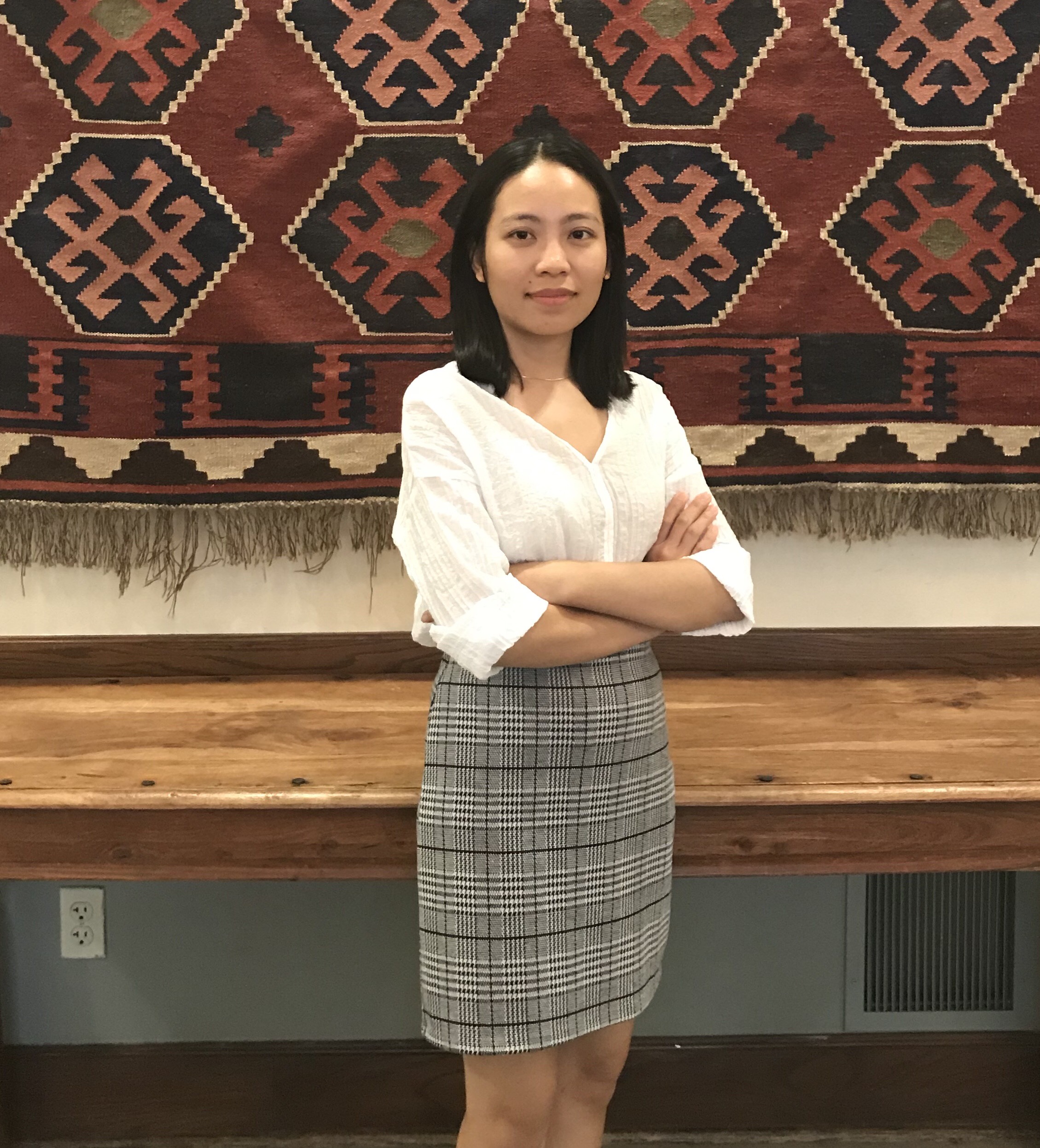
Research Assistant
School
of Chemical, Biological & Materials
Engineering
University
of Oklahoma
Topic:
"Computational Catalysis"
(with Yu Yan)
Slides:
available after the Symposium
Talk Abstract
Coming soon
Biography
Vy Nguyen
is a research assistant
in the
School
of Chemical, Biological & Materials
Engineering
at the
University
of Oklahoma.
She holds a bachelor of
Chemical Engineering
from
Ho
Chi Minh City University of Technology,
Vietnam.
She is currently working toward her PhD degree
in the
Computational
Materials and Chemistry
group,
with an emphasis on
catalysts for biofuel transformation.
She does computational simulation using
Density Functional Theory (DFT)
to characterize and
understand
these chemical and physical processes
at atomic scale,
through which the
material's properties
can be improved and tailored.
Xiaoliang Pan
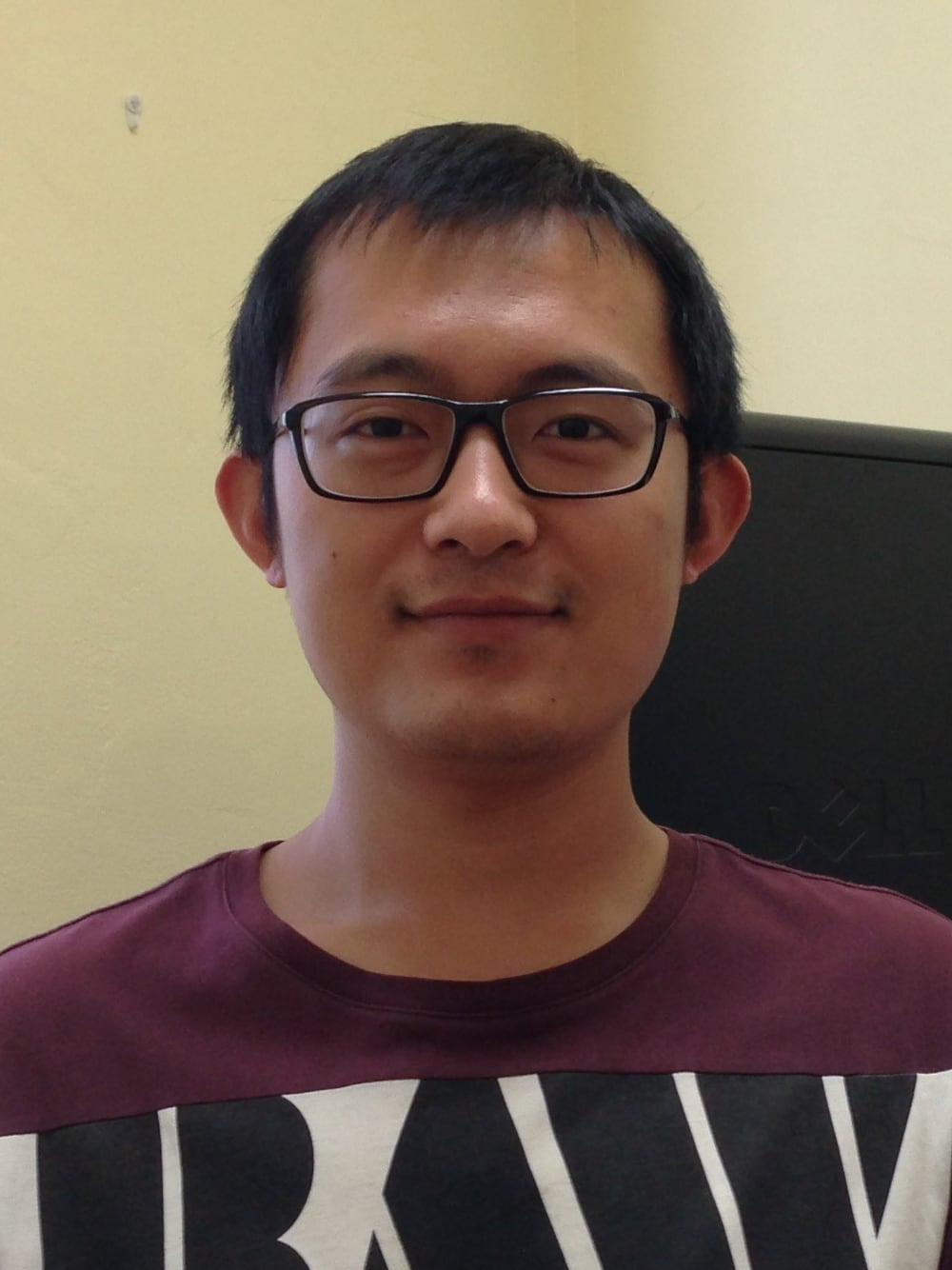
Postdoctoral Research Associate
Department
of Chemistry & Biochemistry
University
of Oklahoma
Topic:
"Using Computers to Simulate
Enzymatic Reactions"
Slides:
available after the Symposium
Talk Abstract
Enzymes are catalysts that
accelerate chemical reactions under
the mild conditions of
temperature,
pH,
and
pressure
of the cells.
Besides theoretical interest about
how enzymes achieve
such remarkable efficiency and specificity,
studying enzymatic reactions
also has important implications in
industries such as
pharmaceuticals,
chemical production,
and
biofuels.
Computer simulations allow us to study
the process of enzymatic reactions
at the atomistic level,
and to gain detailed insight into
the mechanisms,
which is of great importance
for answering fundamental scientific questions
as well as for industrial applications
such as drug development.
Biography
Xiaoliang Pan
is a postdoctoral research associate in
Department
of Chemistry & Biochemistry
at the
University
of Oklahoma.
He received his Ph.D. degree from
Jilin
University,
China in 2012.
After that,
he moved to the U.S.
and worked at the
University
of Arizona
as a postdoctoral research associate,
before joining OU in 2017.
His research interests include
studying the mechanisms of
enzymatic reactions
and
developing combined
quantum mechanics/molecular mechanics (QM/MM)
methods
and
accelerated free energy calculation techniques.
Felipe Perez

Ph.D. Student
Mewbourne
School of Petroleum & Geological
Engineering
University
of Oklahoma
Talk Topic:
"Molecular Footprints of Enhanced Oil Recovery
in Shale Organic Pores"
Talk Slides:
available after the Symposium
Abstract
Oil and natural gas
are mainly stored in
organic pores in shale rocks.
The size of the pores
in the organic matter
present in shale
ranges from
a few to a couple hundred nanometers,
and the permeability of shale rocks
is of the order of nanodarcies.
The use of
horizontal drilling and hydraulic fracturing
have made possible
the extraction of oil and natural gas
in nanoporous shale plays,
although it is well accepted that
hydrocarbon recovery from shale reservoirs
is less than 10%.
The question then is
whether or not the injection of a solvent
could help extract more hydrocarbons.
In this talk,
I will explain how we address this question
using molecular simulations,
and
the computational requirements,
advantages and limitations of such simulations.
I will also discuss
how our main findings shed light on
the mechanisms by which
enhanced oil recovery in shale rocks works.
Biography
Felipe Perez is an Engineering Physicist and current PhD Candidate in Petroleum
Engineering at the Mewbourne School of Petroleum and Geological Engineering,
University of Oklahoma. He holds a MSc in Earth Sciences from EAFIT University
(Colombia) and a MSc in Petroleum Engineering from the University of Oklahoma.
For the last three years Felipe has been studying unconventional reservoirs,
particularly liquid-rich shales using molecular simulations. He investigates the
phenomenology that inherently occurs in organic nanopores such as the
suppression of critical properties of reservoir fluids, adsorption, diffusion,
fluid fractionation, and fluid transport. He is interested in enhanced oil
recovery in shales, exploring the interactions between reservoir and injection
fluids, and organic matter in shale rocks using molecular dynamics. The fluids
injected include environmental friendly solvents and designed microemulsion
nanodroplets that modify the molecular forces between reservoir fluids and
rocks. His work goes hand in hand with experimental studies in order to obtain a
better understanding of the mechanisms that take place in unconventional
reservoirs by which oil and natural gas are being produced today.
Alan Ray

Graduate Assistant
Department
of Chemistry & Biochemistry
University
of Oklahoma
Talk Topic:
"Computational Barriers in Studying
Metamorphic Proteins"
Slides:
available after the Symposium
Abstract
Coming soon
Biography
Coming soon
Nickalas
Reynolds
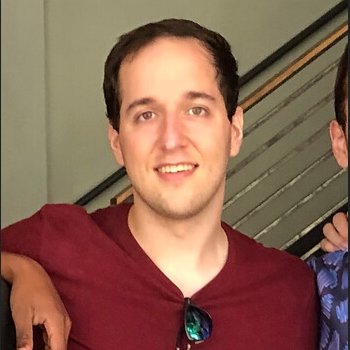
Graduate Research Assistant
Homer
L. Dodge
Department of Physics & Astronomy
University
of Oklahoma
Topic:
"First Look at Protostars:
Detailed Modeling of the Youngest of
Stellar Systems with Schooner"
Slides:
PDF
Abstract
Stars form within
clouds of dust and gas
that collapse under the force of gravity.
As the cloud collapses,
the collapsing matter
forms a so-called "protostellar" disk of
gas and dust,
rather than falling directly onto
the primordial star or "protostar,"
due to the conservation of angular momentum.
This matter is then accreted onto
the central protostar
over the next several million years.
It is in this disk of gas and dust
where planets are expected to form,
within the first few million years of
stellar formation.
We present the largest study to date
detailing the structure of protostellar disks.
We combine
high resolution interferometer facilities
like that of the
Atacama
Large Millimeter/submillimeter Array
(ALMA)
in Chile
and the
National
Radio Astronomy Observatory
(NRAO)
Very
Large Array
(VLA)
in New Mexico,
spectral energy distributions (SEDs),
together with
radiative transfer modeling codes,
to characterize the structures of these disks.
For the first time,
we can put together
a picture of the initial conditions of
the disks through which stars accrete mass,
multiple star formation happens,
and planets form.
These full radiative transfer models
are computationally expensive,
requiring the use of
supercomputers such as OU's Schooner,
in order to calculate a suite of models
for the hundreds of sources.
Biography
Nickalas Reynolds
is a fourth year graduate assistant at the
University of Oklahoma.
He spends most of his time writing codes
to analyze data retrieved by ALMA,
take data using the 3.5m
Apache
Point Observatory
in New Mexico,
and working on the various telescopes
for the public star parties hosted by OU
every Wednesday night on top of Lin Hall.
He does a lot of outreach events with
Lunar
Sooners,
focusing on teaching
underrepresented minority groups in Oklahoma
about science.
His research focuses on
characterizing multiple star formation
and
how the formation/evolution of
protostellar disks
shapes the evolution of planets and stars.
I love learning the intricacies of
coding languages and implementing them
throughout his work and leisure:
mostly developing on websites using NodeJS,
coding JS and Python bots
to do more work for him,
and
developing various GUIs/CLIs in
Rust and Python.
Derek
Stratman
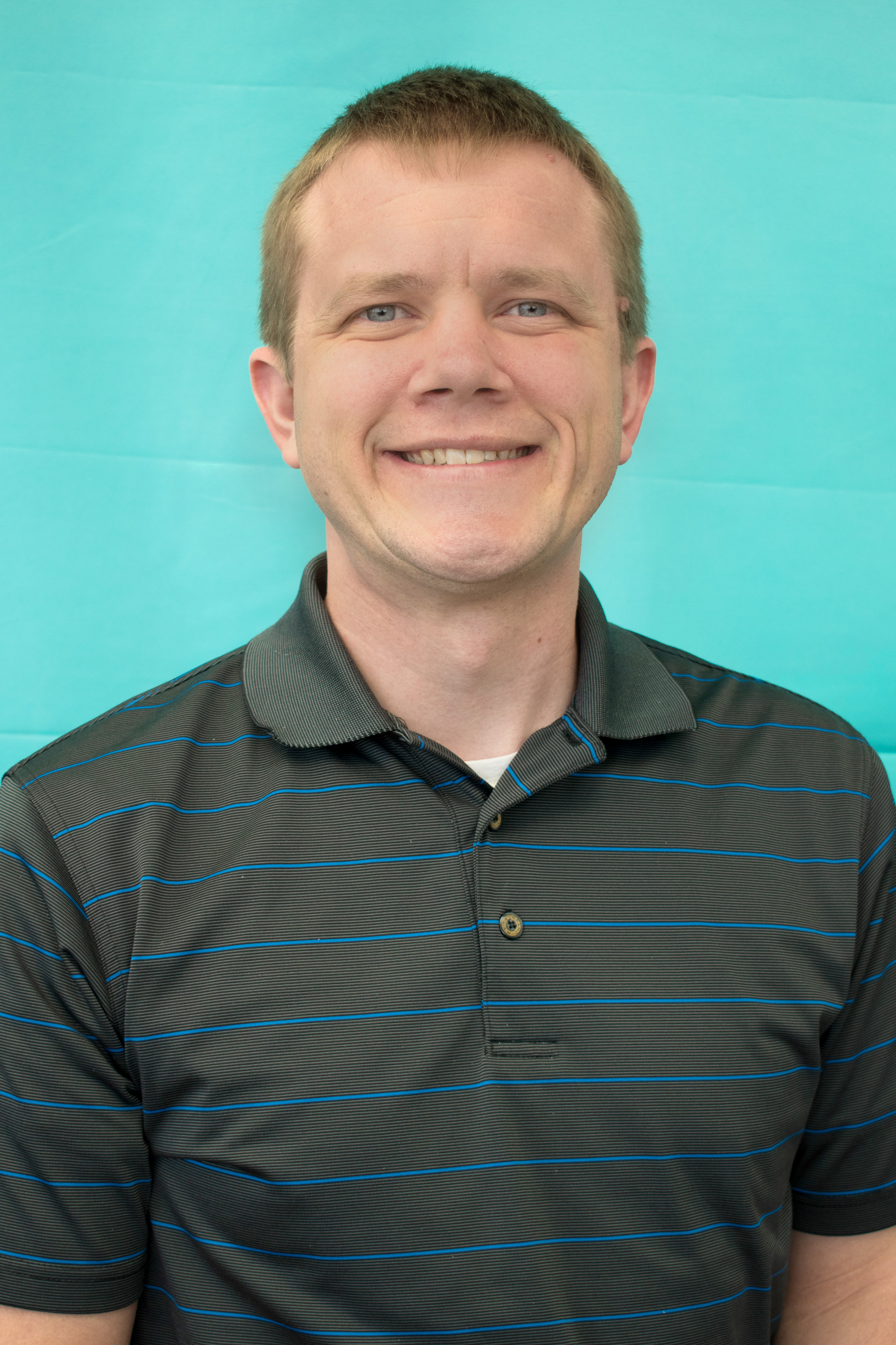
Research Scientist I
Cooperative
Institute for Mesoscale Meteorological
Studies
University
of Oklahoma
National
Oceanic & Atmospheric Administration
National
Severe Storms Laboratory
Topic:
"Optimal Temporal Frequency of
NSSL Phased-Array Radar Observations
for an Experimental Warn-on-Forecast System"
Slides:
available after the Symposium
Talk Abstract
A potential replacement candidate for
the aging operational
WSR-88D
infrastructure currently in place
is the
Phased-Array
Radar
(PAR)
system.
The current WSR-88Ds take ~5 minutes
to produce
a full volumetric scan of the atmosphere,
whereas PAR technology allows for
full volumetric scanning of
the same atmosphere
every ~1 minute.
How this increase in
temporal frequency of radar observations
might affect the
NOAA
National
Severe Storms Laboratory's
(NSSL)
Warn-on-Forecast
system
(WoFS),
which is
a storm-scale ensemble
data assimilation and forecast system
for severe convective weather,
is unclear.
Because radar data assimilation
is critical for the WoFS,
this study explores
the optimal temporal frequency of
PAR observations for
storm-scale data assimilation,
using the 31 May 2013 El Reno OK
tornadic supercell event.
The National Severe Storms Laboratory's
National
Weather Radar Testbed
PAR
in Norman OK
began scanning this event
more than an hour before
the first (and strongest) tornado developed
near El Reno,
and
scanned most of
the tornadic supercell's evolution.
Several experiments
using various cycling/data frequencies
to synchronously assimilate
these PAR observations
are conducted,
to produce analyses
and
very short-term forecasts of
the El Reno supercell.
Forecasts of
low-level reflectivity
and
mid-level updraft helicity
are subjectively evaluated
and
objectively verified,
using spatial and object-based techniques.
Results from these experiments,
along with their computational costs,
will be presented.
Biography
Derek Stratman
is a Research Scientist I at the
Cooperative
Institute for Mesoscale Meteorological
Studies
(CIMMS)
and
the
NOAA
National
Severe Storms Laboratory
Laboratory (NSSL)
in
Norman OK.
He works in NSSL's
Warn-on-Forecast
(WoF)
research and development group,
and he is on the
Process, Data Assimilation, and Modeling
(PDAM)
Team in NSSL's
Forecast Research and Development Division
(FRDD).
His current research focuses on
improving data assimilation
techniques and methods
within the WoF system (WoFS),
to provide better probabilistic guidance of
severe weather.
He earned an M.S. and Ph.D. in
Meteorology from the
University
of Oklahoma's
School
of Meteorology
and a B.S. in
Meteorology
from
Valparaiso
University.
Keith
Walters
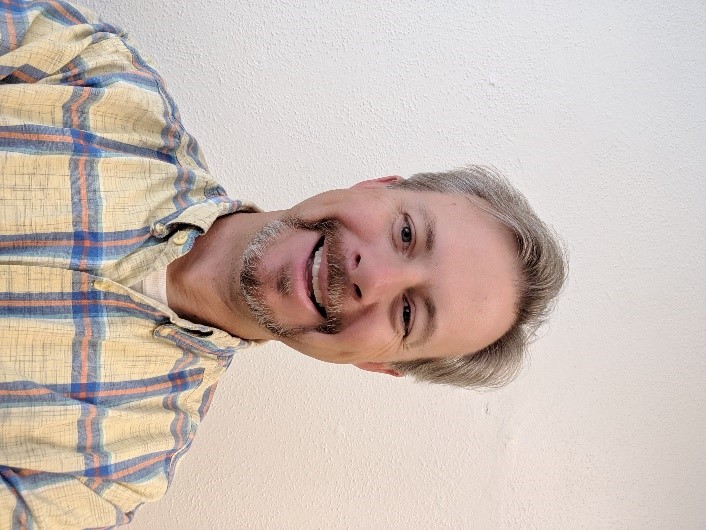
Professor
School
of Aerospace &
Mechanical Engineering
University
of Oklahoma
Topic:
"Overview of HPC-based
Computational Fluid Dynamics Research for
Complex Engineering Applications"
Slides:
available after the Symposium
Talk Abstract
Computational
fluid dynamics
(CFD)
has developed into a mainstay tool
for addressing critical problems
in science and engineering.
The availability of
high-performance parallel computing hardware,
along with advances in
numerical algorithms and software engineering,
has greatly expanded the scope and impact of
this technology
in both academic and industrial settings.
Nevertheless,
practitioners still face
obstacles to obtaining
fast and accurate simulation results
that can be used for
effective analysis and design,
and researchers continue to investigate
methods to reduce
computational time and memory overhead,
increase robustness,
and minimize uncertainty.
To address some of these issues,
Dr. Walters' research group has developed
numerical algorithms and physical models
for CFD simulation of complex flows.
These include
methods for mitigating errors in
finite-volume CFD methods,
advanced approaches for
modeling fluid turbulence,
and
novel boundary condition techniques for
steady and unsteady flows.
This presentation will discuss
issues and challenges for
CFD simulation on HPC systems,
and will provide an overview of
recently developed methods and algorithms
in Dr. Walters' research group.
It will also highlight
research and application areas for which
these new methods have
the potential for significant impact.
These include,
for example,
next-generation
aircraft and automobile engines,
high-speed air vehicle aerodynamics,
hydrokinetic energy systems,
wind turbines,
ship hydrodynamics,
and
biological/biomedical flows.
Computational results
will be presented and discussed
for canonical test cases
and
for more complex demonstration cases
in several of these areas.
Biography
Keith Walters
is currently
the
Tom & Mary Dugan Professor
in the
School
of Aerospace and Mechanical Engineering
at
the
University
of Oklahoma.
Prior to joining OU,
he was a faculty member in the
Mechanical
Engineering Department
at
Mississippi
State University
from 2003 – 2016,
where he served as an Associate Director of the
Center
for Advanced Vehicular Systems
and as Science Coordinator for
Mississippi
NSF EPSCoR.
Dr. Walters' research covers
a broad range of topics in
fluid mechanics and heat transfer,
with a focus on fundamental and applied CFD.
He has published
over 120 refereed technical papers
and participated in numerous
national and international conferences.
His work has been sponsored by
government agencies including
the
National
Science Foundation,
NASA,
Department
of Defense
and
Department
of Energy,
and by industry partners.
Computational models and techniques
developed by his group
have been adopted into
government,
open source,
and
commercial CFD simulation codes.
He is the former Chair of both the
American
Society of Mechanical Engineers
(ASME)
Fluids
Engineering Division
and the
ASME
Fluids Applications and Systems
Technical Committee,
has served as Associate Editor for the
Journal
of Fluids Engineering,
and was co-chair of the
ASME-JSME-KSME
Joint Fluids Engineering Summer Conference
held July 2015 in Seoul, Korea.
Previous awards include the
NSF
CAREER
award,
the MSU
Bagley College of Engineering
Outstanding Researcher award,
and MSU
Bagley College of Engineering
Academy of Distinguished Teachers.
He and his co-authors were winners of the
ASME
Robert T. Knapp Award
in both 2016 and 2017.
Yu Yan
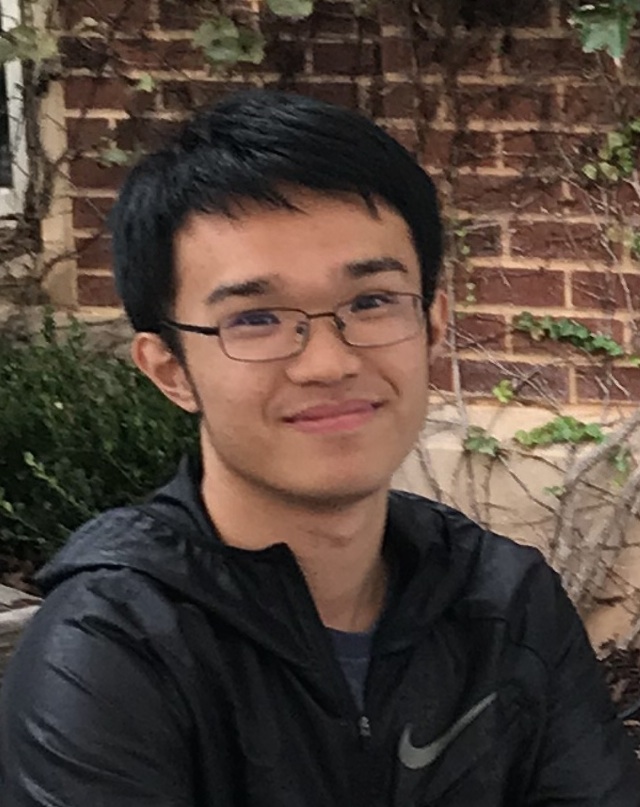
Research Assistant
School
of Chemical, Biological & Materials
Engineering
University
of Oklahoma
Topic:
"Computational Catalysis"
(with Vy Nguyen)
Slides:
available after the Symposium
Talk Abstract
Coming soon
Biography
Yu Yan
finished his undergraduate degree in
Chemical
Engineering
from
Lanzhou
University,
China, in 2018.
Now,
he is pursuing his doctoral degree
at OU
as a graduate student working in
Dr. Bin Wang's
Computational
Materials and Chemistry Group.
Current projects include
catalysis for bio-oil,
with an an emphasis on
valuable processing downstream
over metal catalyst.
OTHER
BREAKOUT SPEAKERS TO BE ANNOUNCED

